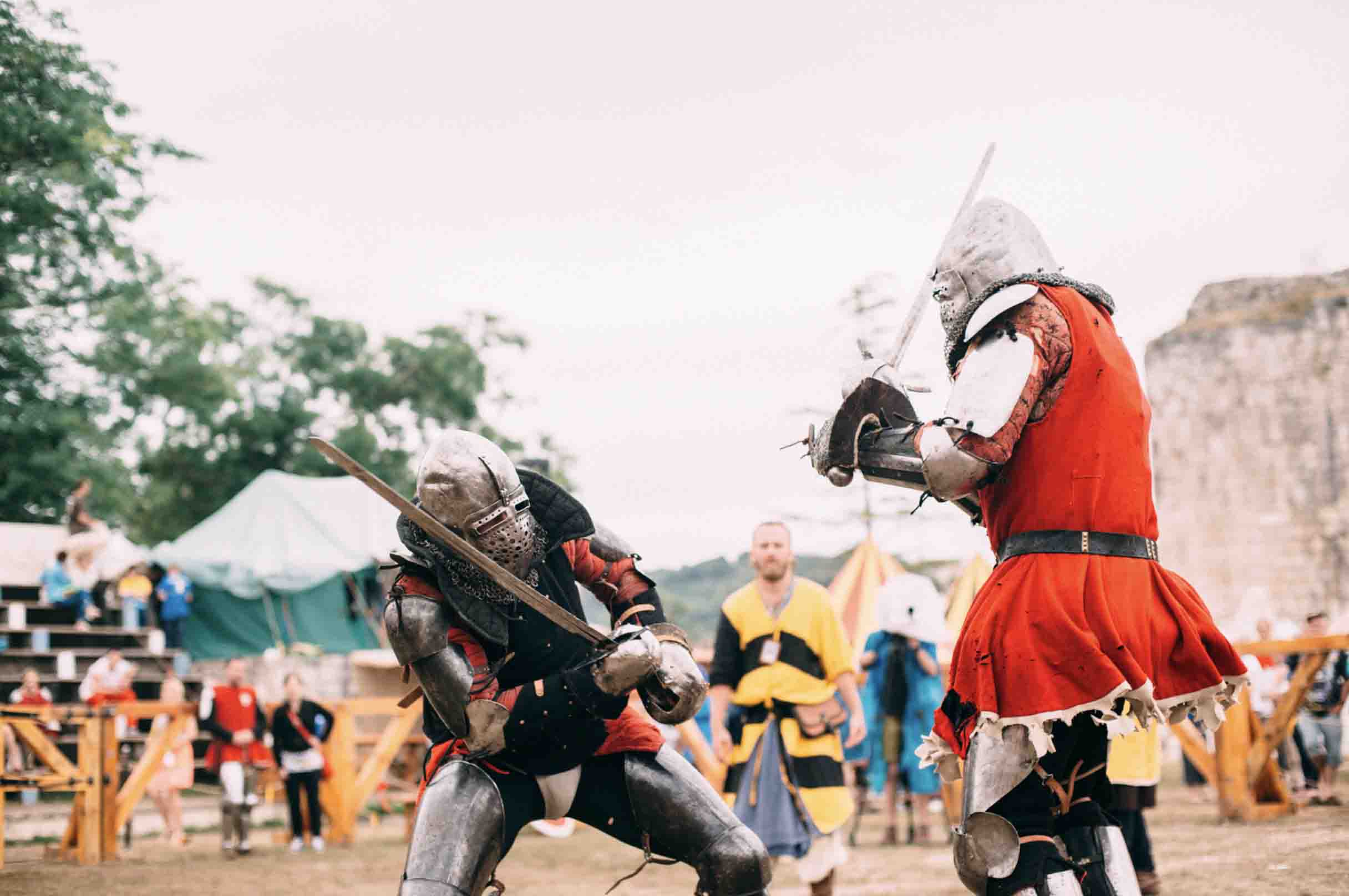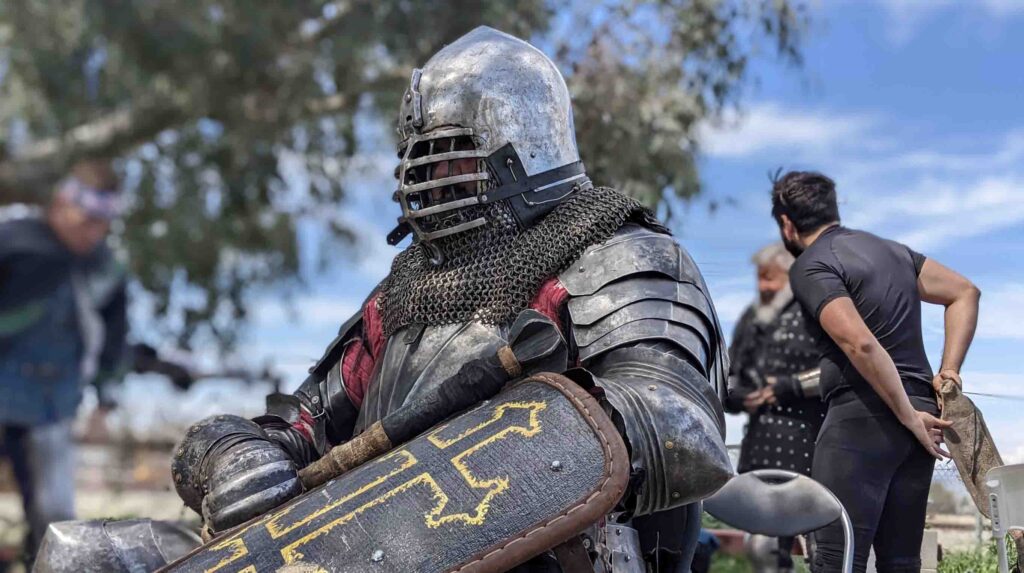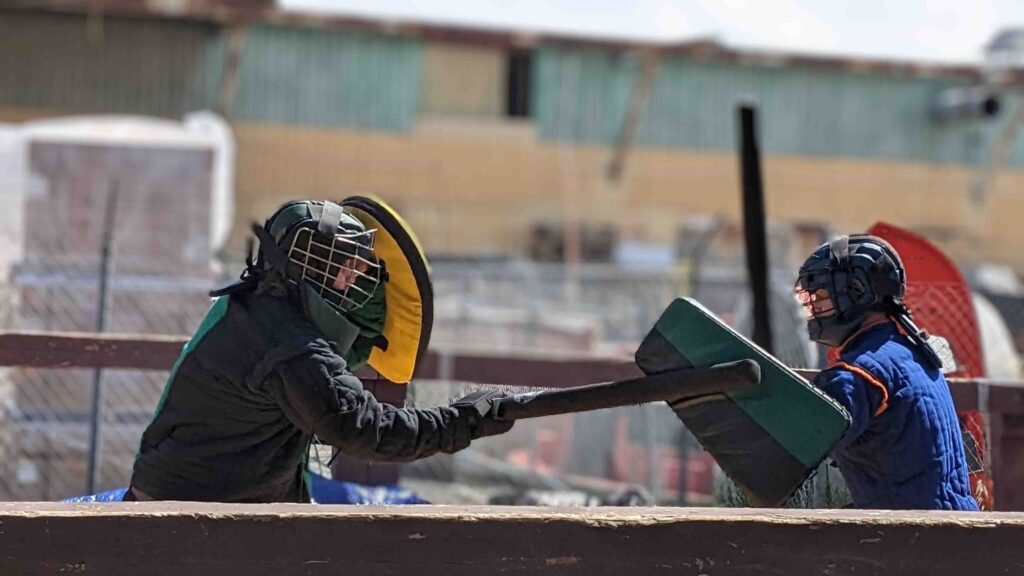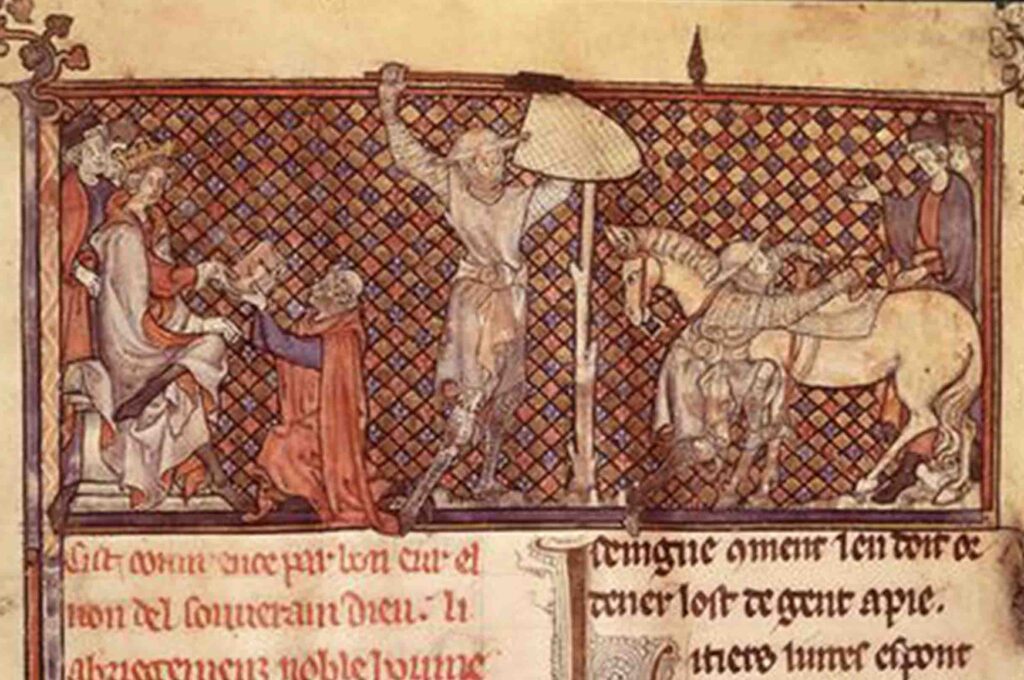
How would buhurt fighters perform vs medieval knights?
Posted at h
in Technique & Strategy
Buhurt is the closest thing to the chaos of medieval combat the modern world can safely offer, and players of the LA Golden Knights train to use 15th century arms and armor to fight for glory and fun. The European warriors who originated this sport became icons for their lethality and discipline. Their feats, skills, and techniques are studied and aspired to hundreds of years later, and while individual martial prowess is less valuable in modern society than it once was, it holds great personal weight in the minds of many.
But who would win in a modern Buhurt matchup: a modern player or a medieval knight? This is a fun hypothetical– the sort of question that gets asked on every corner of the internet where history buffs, martial arts nerds, and keyboard generals congregate. A common belief is that the modern ways are better. ‘Modern’ is synonymous with ‘advanced’ and ‘best,’ while ‘history’ can mean ‘antiquated’ and ‘obsolete.’
Let’s say this: two top Buhurt players, one from the 21st century and one from the 15th, agree to fight in a dimension where neither has a distinct environmental advantage for a 1vs1 pro-fight. Both players are familiar with a 21st century ruleset, which they follow to choose arms and armor they are most comfortable with. Each is supported by one or more squires who speak their language. The familiar rules of physics apply.

Who Are the Fighters?
The 21st century Los Angeles-based Golden Knight is a working adult. They are athletic, might have fighting experience and an interest in history, tried Buhurt and got hooked. Now they train with their friends and teammates (schedule permitting) and exercise on their own to prepare for the rigors of armored combat against other teams of enthusiasts. Buhurt is probably the hardest physical activity they do regularly.
What about the 15th century medieval knight? He is of the warrior caste. His existence is dedicated to maintaining himself, any fighters he leads, and his property so he is ready for war. As a baby the first toy he was given was a wooden sword. His closest friends are hired training partners, other knights, and the armorers who fit him with the tools and gear that literally keep him alive. He has killed in war, fought Buhurt, and is proficient at both.
I asked my fellow LA Golden Knights who they thought would win. Consensus was unanimous.

Victory to the Knight from History
It’s an easy decision. The knight has drilled relentlessly since childhood. He is a practiced murderer and could kill you purposely by accident– a reflexive thrust into an armor gap could seriously injure a fighter even with blunted weapons. Even if that action gets a red card, if the modern fighter is incapacitated (because they are dead or maimed) would you still call that a win?
You do not need to fight at the highest levels of the sport to recognize the value of a life spent training. This is a passion or a hobby for us, but war was the core identity for those in the martial caste. The armed and armored human body is an ancient and successful melee weapon system that was mastered a long time ago, and it dominated until technology moved war too far outside of arm’s reach.

The Dream of an LA Buhurt Player
If I had the opportunity to meet a knight out of time, I would much rather learn from him than fight. There is so much knowledge that never gets written down: favorite training regimens, stories of battle, specific examples of techniques working and failing. It is not just history. It is real knowledge that can be rediscovered, relearned and reused. I don’t dream of defeating my ancestors, I dream of understanding their wisdom and their ways.
When we play Buhurt, we visit a corner of the 15th century where iron sharpens iron, where victory is determined by your skills and the teammate beside you, and safety is a relative term. For the lucky few who stand and fight with the LA Golden Knights, history is an active teacher, and connecting with the past is a dream that comes true every practice.
